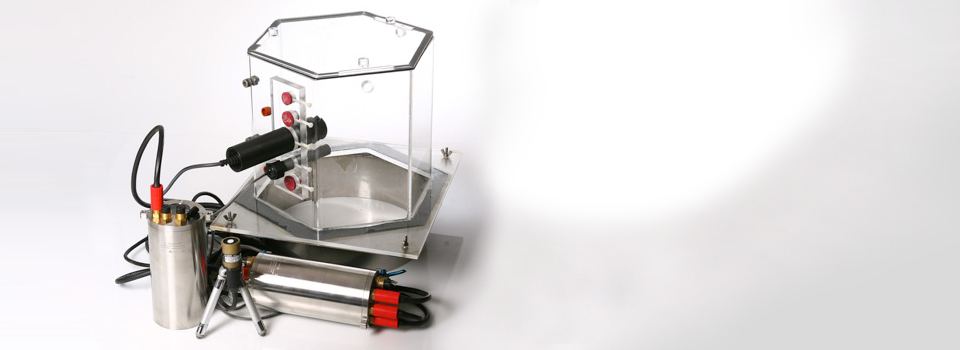Submersible Photosynthesis-Respiration System
The Submersible Photosynthesis-Respiration System measures the rate of production or consumption of oxygen in a submerged chamber, which provides a good proxy for photosynthesis and respiration rates. The System is only designed to operate two chambers, and is therefore easy to carry, setup and deploy. No more lugging the old-style heavy respirometer around, with the inherent health and safety issues. For more chambers, simply add one or more extra 2-chamber modules.
Features:
- Fully submersible, 24 + hours operation
- Measures dissolved oxygen, temperature, PAR, chlorophyll fluorescence, pH
- Chambers in UV-transparent plastic; stainless steel cutter plates
- Additional Power Tube for stir- and flush-pumps
- Useful in Coral, Fish, Seagrass, Algae and other underwater system studies
The Submersible Photosynthesis-Respiration System is controlled by a Submersible Datalogger, which can also be used with the Aquation Fluorometer Sensors. For those already using the Submersible Dataloggers, this new respirometer would be a nice addition to your toolkit. For those without a Submersible Datalogger, acquiring the Submersible Photosynthesis-Respiration System will mean you can also operate one or more Aquation Shutter Fluorometer Sensors, and the Aquation Classic Fluorescence Submersible Sensor, 50 m.
Download product brochure:
Aquation Respirometer Brochure 28Aug13
Setting up the Respirometer System in preparation for the antFOCE deployments. Derwent River, Tasmania
Here in the lovely Derwent River we are setting up a submersible chamber for respirometry measurements. A Shutter Fluorometer is already installed within the chamber. The DO probe, then PAR sensor are installed. The Power Tube is shown.
Setting up the Power Tube
Connecting correctly avoids grief!
A minimalist submersible respirometery setup examining photosynthesis at a high CO2 vent.
Aquation’s Submersible Photosynthesis-Respiration System is shown deployed in shallow water near the natural submarine vent at Vulcano Island, Italy. The flexible chambers enclosed seagrass. Oxygen flux, pH and temperature were measured over 24 hours, with additional PAM fluorescence measurements made on adjacent seagrass using the Shutter Fluorometer sensors. This high CO2 site was followed by examination of seagrass photosynthetic performance at a nearby low CO2 site.





